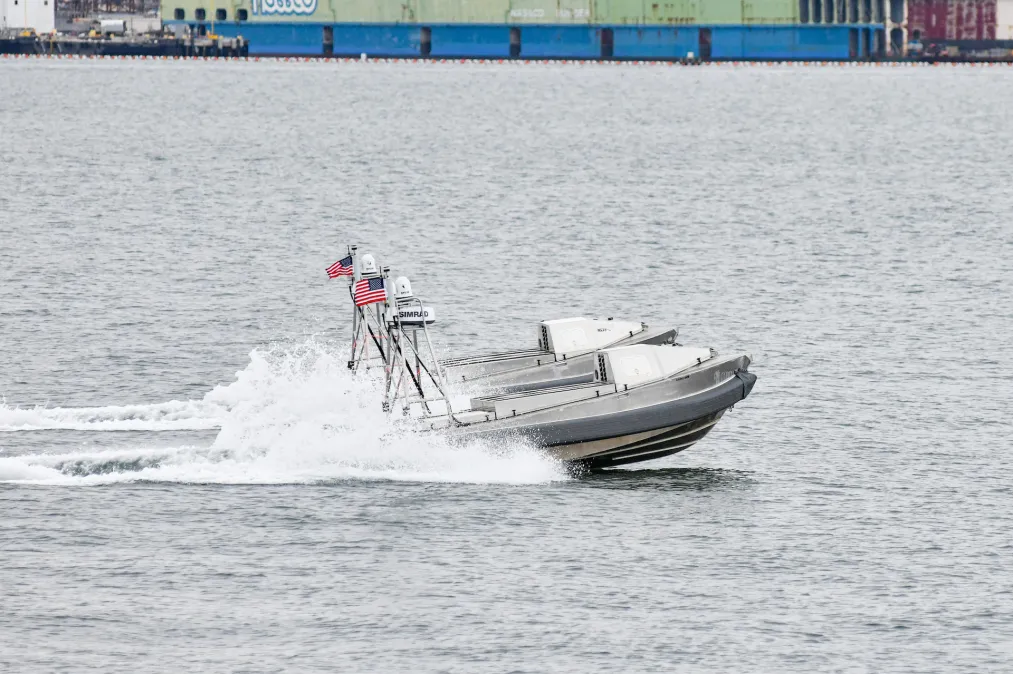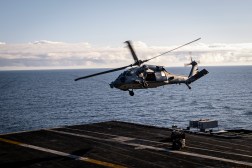Navy eyeing new navigation tech for autonomous maritime drones in case satnav is lost

The Navy is looking for options to enable its future fleets of uncrewed platforms to steam ahead even if they can’t access satellite navigation systems.
The sea service plans to add a slew of robo-ships of various shapes, sizes and mission sets to its inventory in the coming years. Last month, Chief of Naval Operations Adm. Lisa Franchetti laid out a new initiative called Project 33 that aims to scale robotic and autonomous systems across the fleet by 2027 so that maritime forces will be ready for a potential war against China.
Unmanned platforms not only keep sailors out of harm’s way, but they provide opportunities to greatly expand warfighting capacity at less cost than traditional Navy vessels. However, there are concerns that their operations could be impeded, including via problems with their navigation tools.
A new sources-sought notice released Friday requested industry feedback on “enhanced navigation” capabilities for autonomous uncrewed surface vessels (USVs) and unmanned underwater vehicles (UUVs), aimed at addressing some of those issues.
The Naval Surface Warfare Center Panama City Division “is seeking information on localization techniques that can enable missions when Global Navigation Satellite System (GNSS) data is degraded or unavailable and where an a priori map (bathymetric, topographic, etc.) is not known,” the RFI states.
“Sensing modalities of interest include but are not limited to acoustic, electro-optic, and magnetic which are suitable for deployment on platforms such as UUVs and USVs ranging in size from man-portable to large diameter vehicles. Feature extraction and general perception processing approaches should be considered. Solutions can augment inertial navigation systems to limit accumulation of position error (drift) or provide standalone localization via loop closure methods and should be able to converge within a timeframe that is relevant for real-time operation without an operator in the loop,” the document added.
In a separate notice released to industry Friday, officials further outlined their desire for “embedded autonomy” solutions for maritime drones.
The Naval Surface Warfare Center Panama City Division is on the hunt for capabilities that could help UUVs and USVs perform “dynamic, reactive missions” based on real-time sensor observations, without human intervention, according to that RFI.
Technologies of interest include obstacle avoidance; track-and-follow capabilities: dynamic route replanning; in-situ task reprioritization; autonomous underwater vehicle and sensor health monitoring; multi-pass and search route optimizations, and others.
Responses to both RFIs are due Nov. 26.






